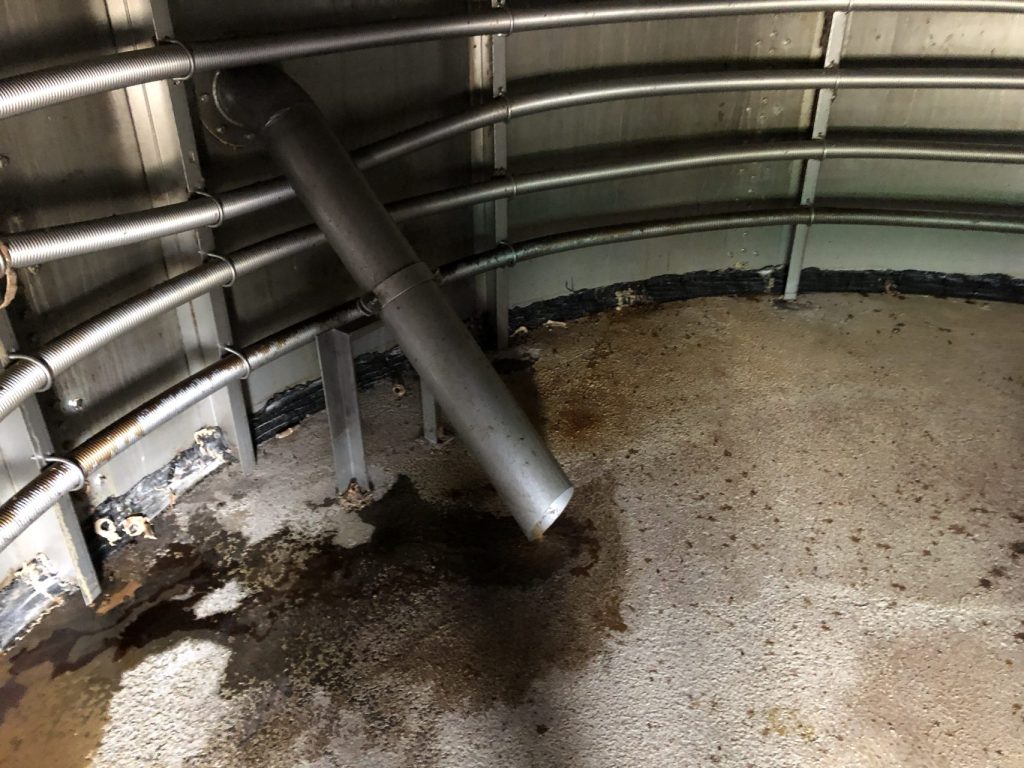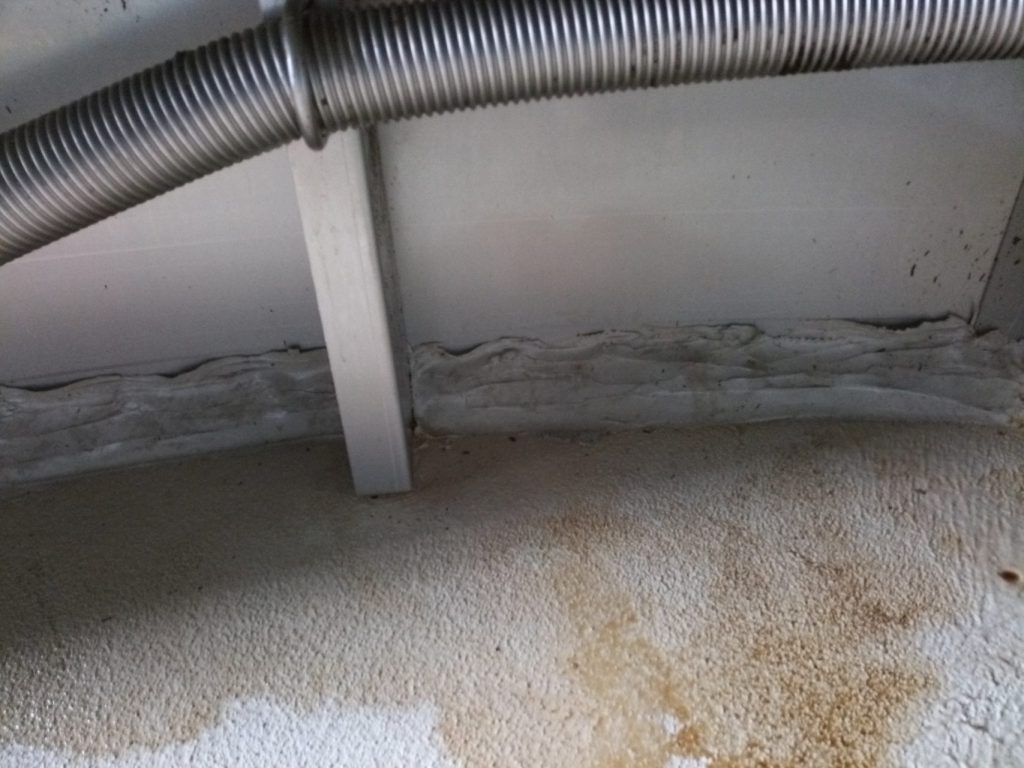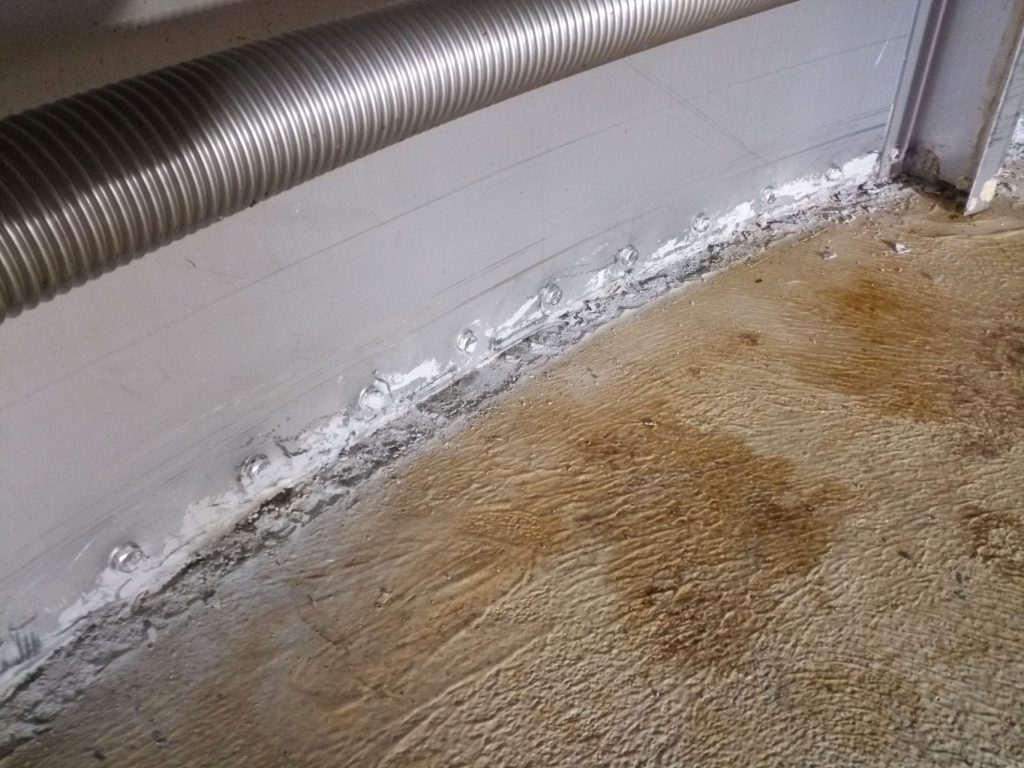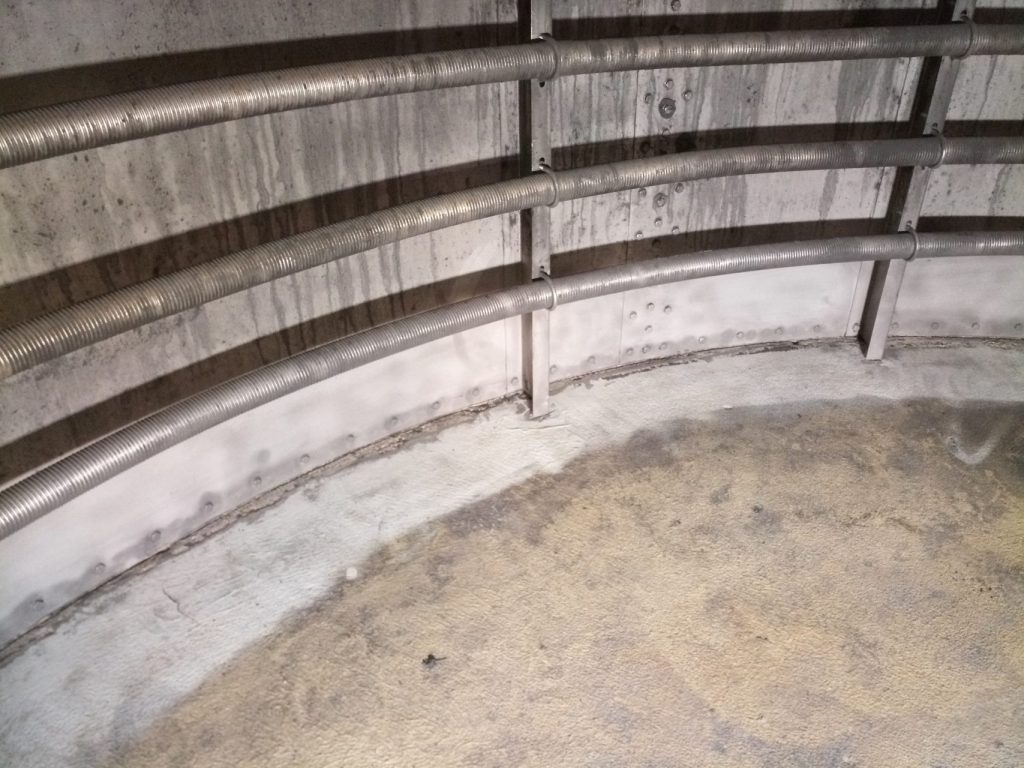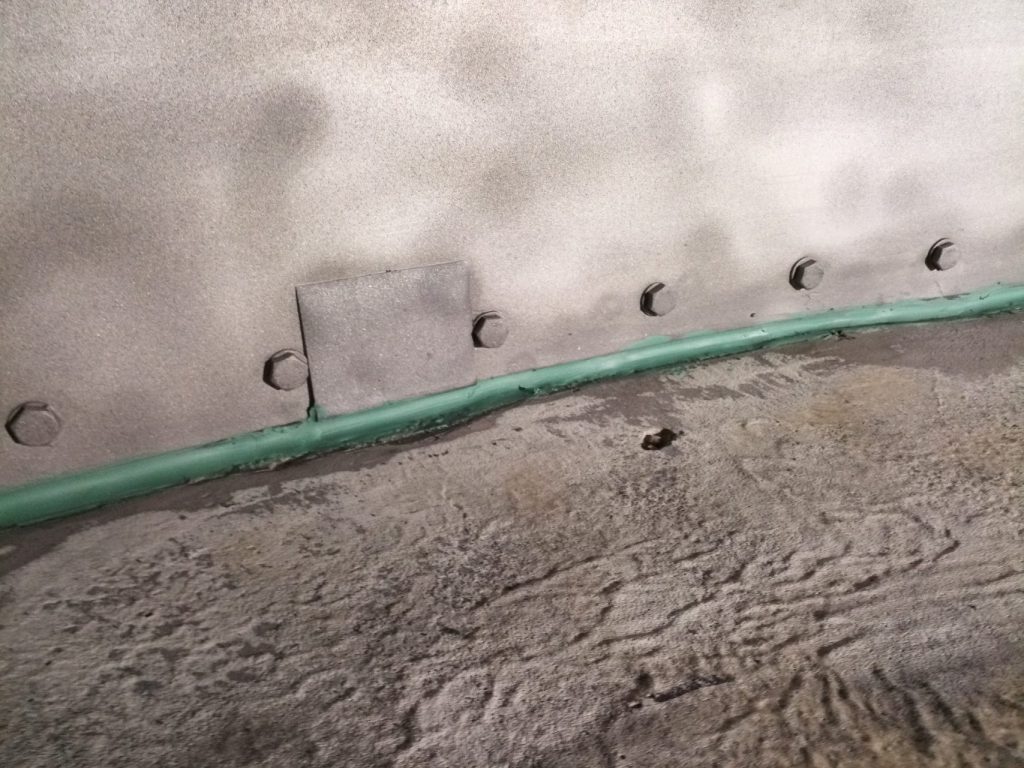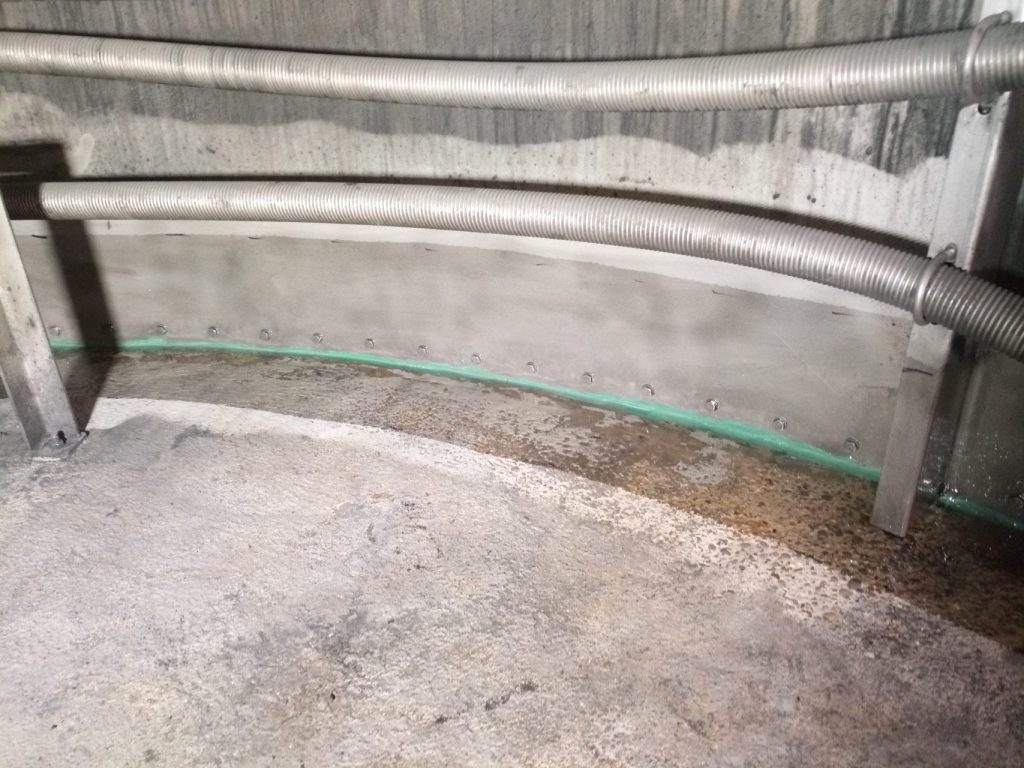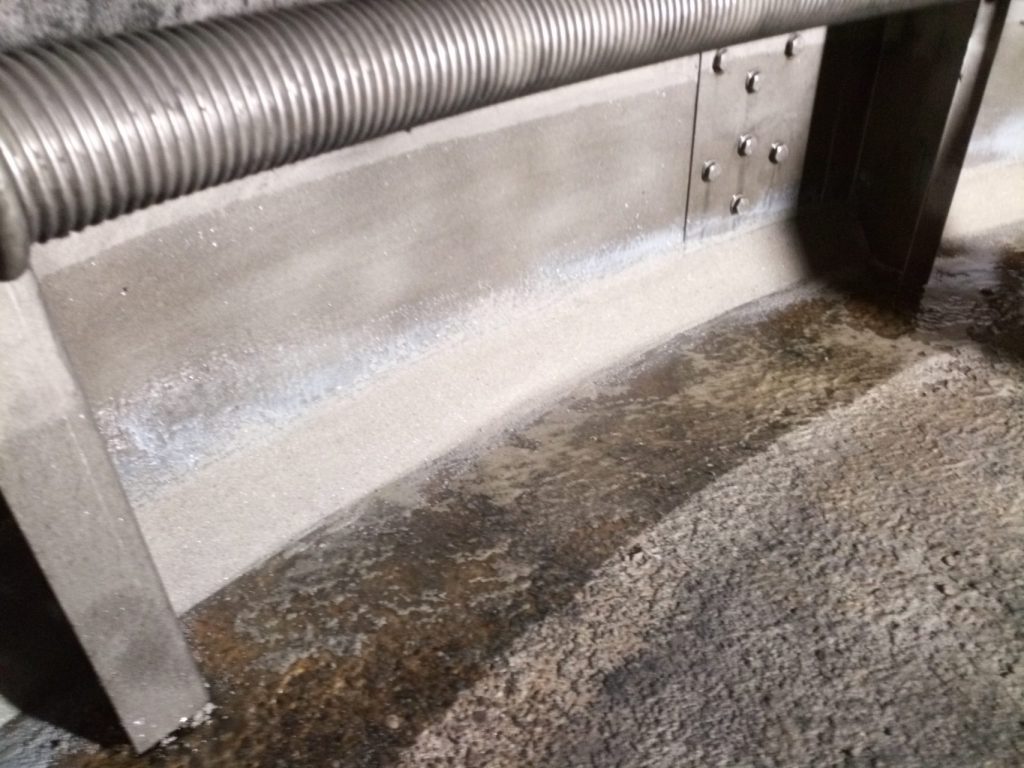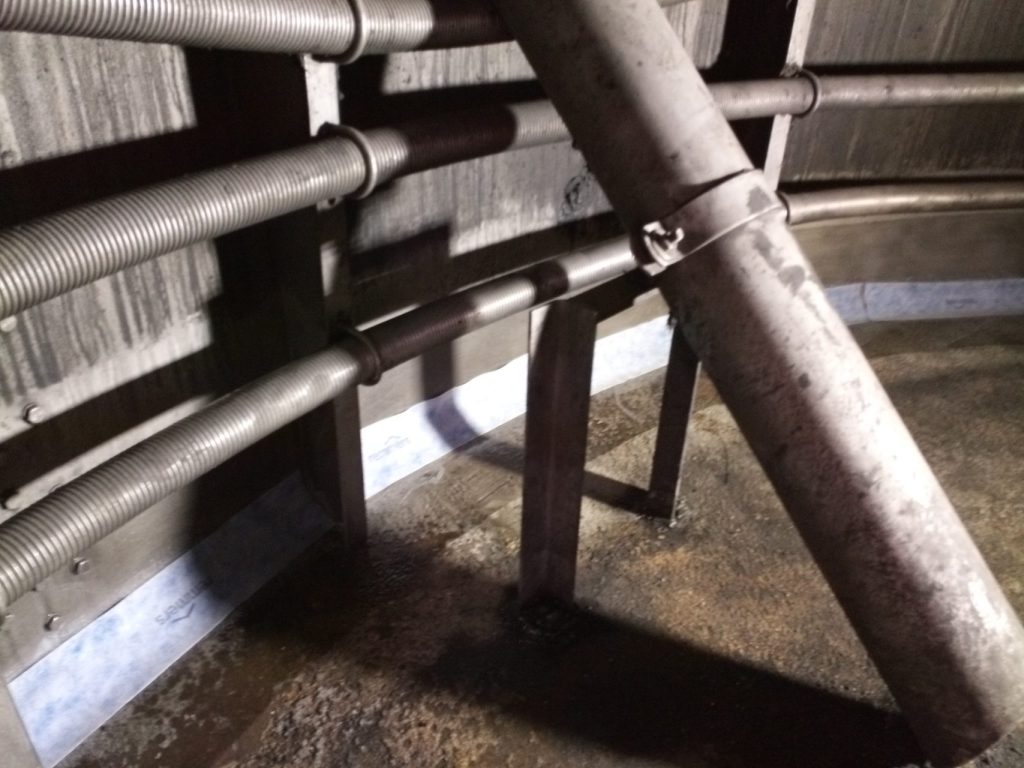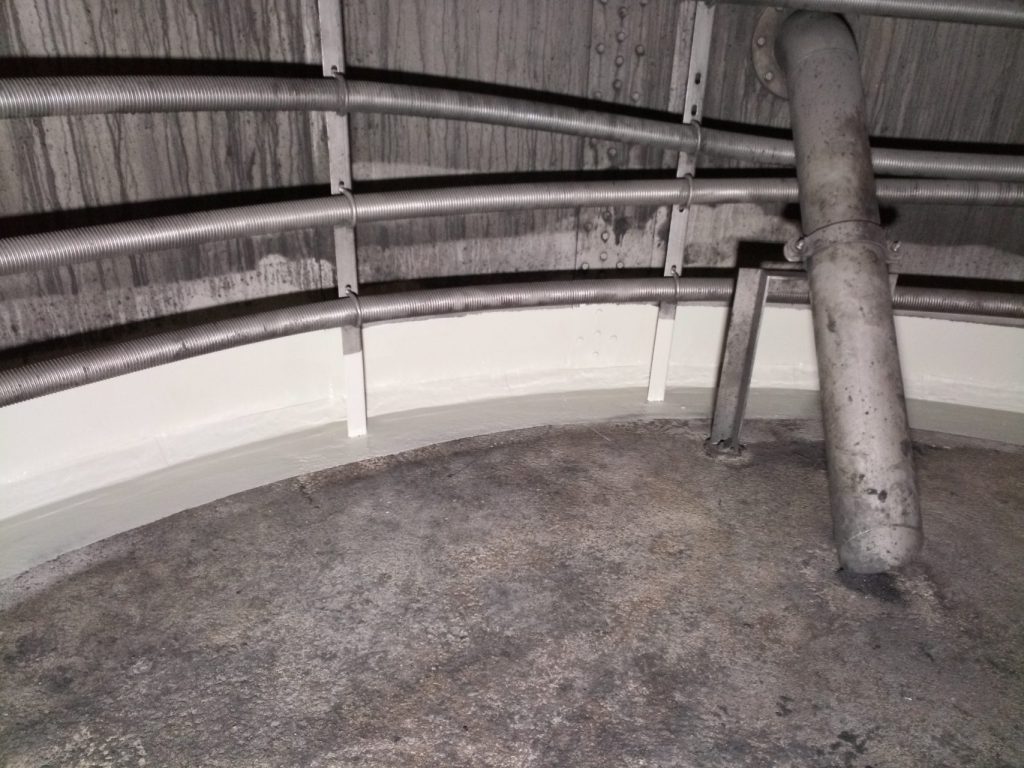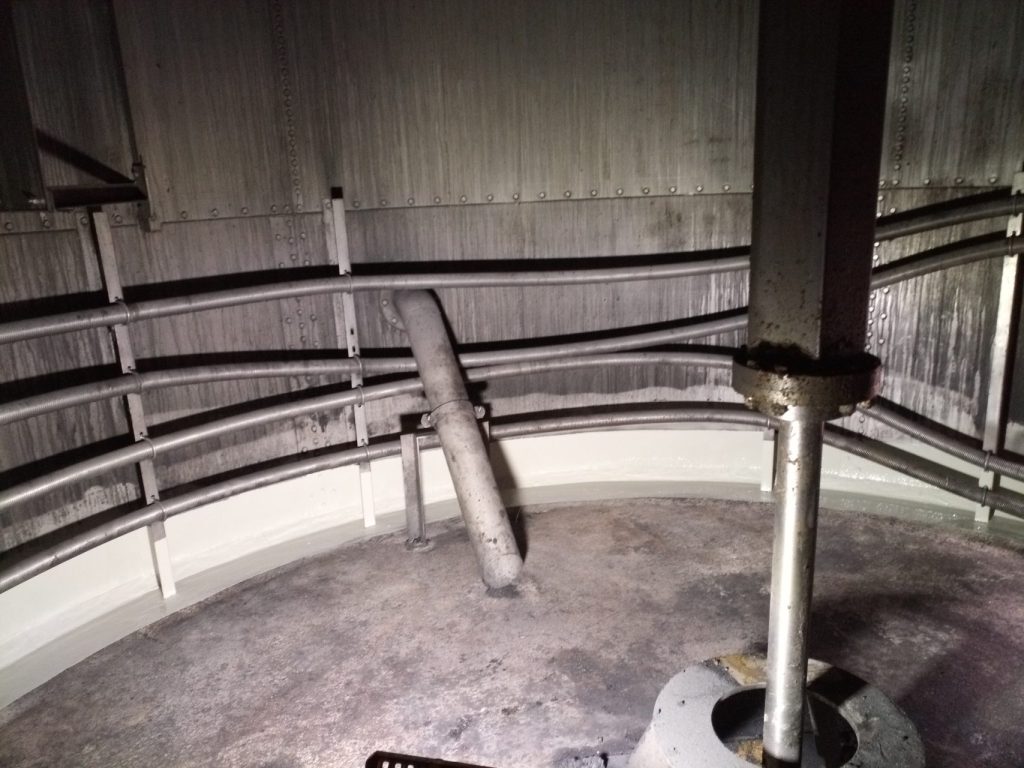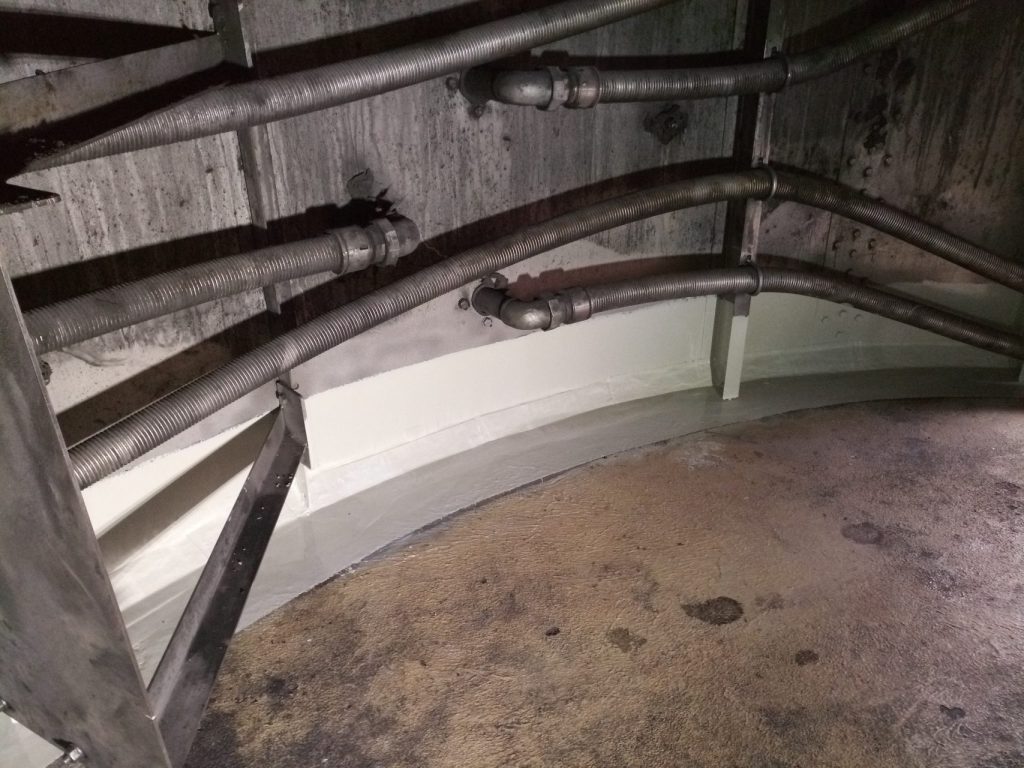The presence of chlorides on the surfaces was tested for as it essential to determine that these are within permitted levels prior to abrasive blasting as this will force any present into the profile created. If left in place chlorides and soluble salts will lead to osmotic blistering and premature failure of tank linings/protective coatings.
Once clean the stainless steel and the concrete were prepared by method of abrasive blasting, ensuring that a minimum surface profile of 50 microns was raised on the stainless steel. This was tested and recorded using a surface profile needle gauge as part our standard QA process.

